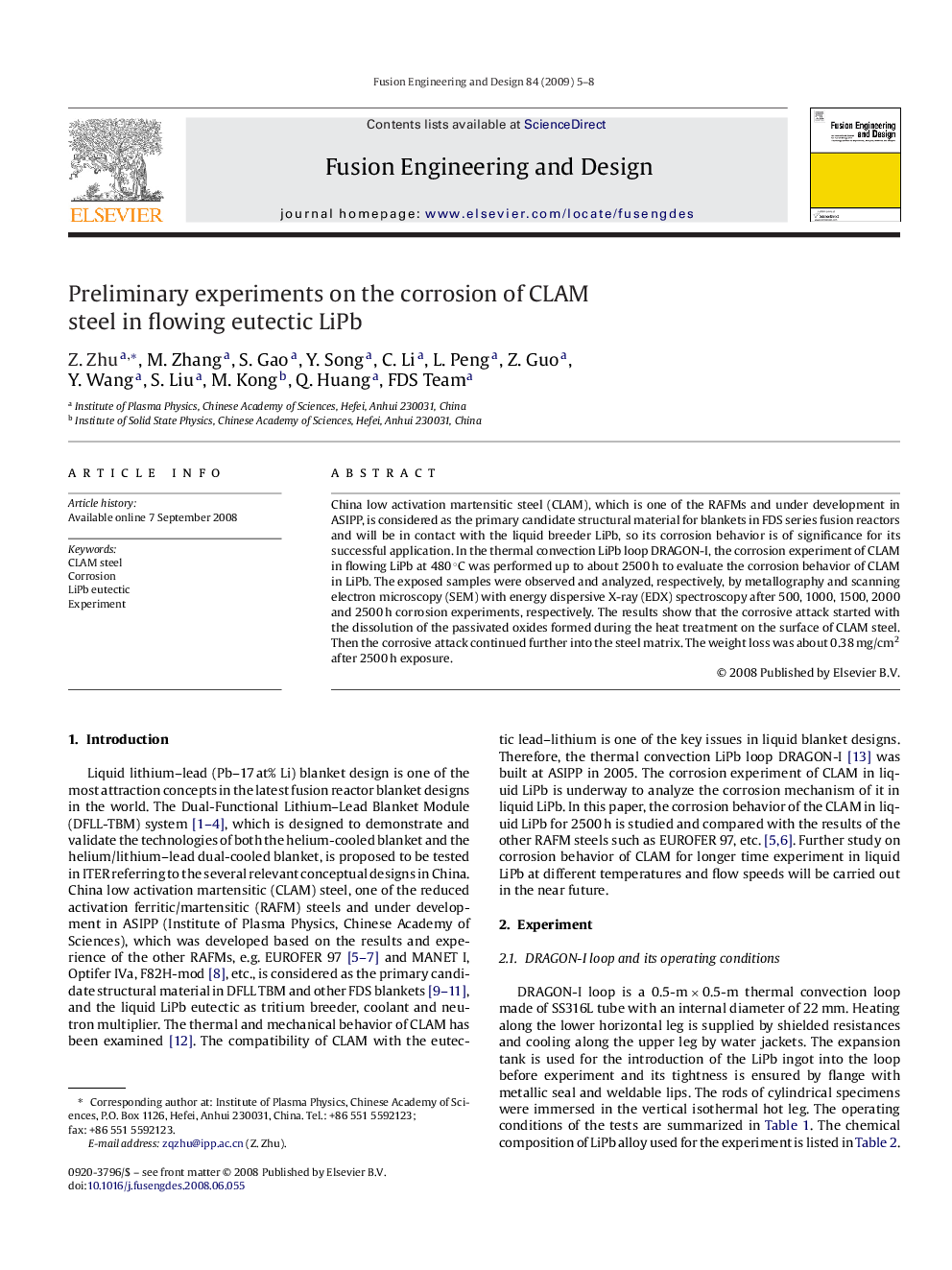| Article ID | Journal | Published Year | Pages | File Type |
|---|---|---|---|---|
| 272839 | Fusion Engineering and Design | 2009 | 4 Pages |
China low activation martensitic steel (CLAM), which is one of the RAFMs and under development in ASIPP, is considered as the primary candidate structural material for blankets in FDS series fusion reactors and will be in contact with the liquid breeder LiPb, so its corrosion behavior is of significance for its successful application. In the thermal convection LiPb loop DRAGON-I, the corrosion experiment of CLAM in flowing LiPb at 480 °C was performed up to about 2500 h to evaluate the corrosion behavior of CLAM in LiPb. The exposed samples were observed and analyzed, respectively, by metallography and scanning electron microscopy (SEM) with energy dispersive X-ray (EDX) spectroscopy after 500, 1000, 1500, 2000 and 2500 h corrosion experiments, respectively. The results show that the corrosive attack started with the dissolution of the passivated oxides formed during the heat treatment on the surface of CLAM steel. Then the corrosive attack continued further into the steel matrix. The weight loss was about 0.38 mg/cm2 after 2500 h exposure.
